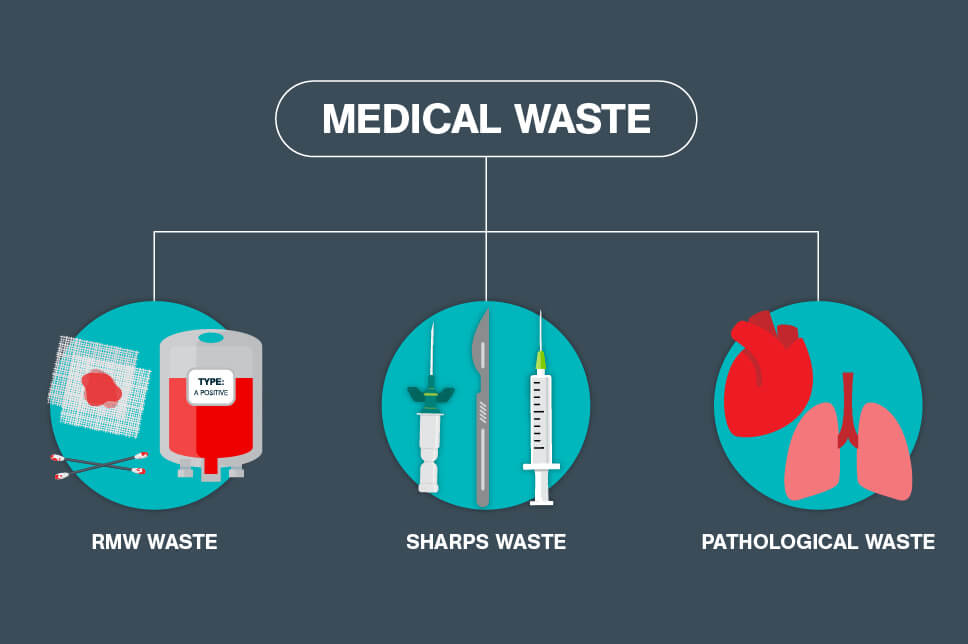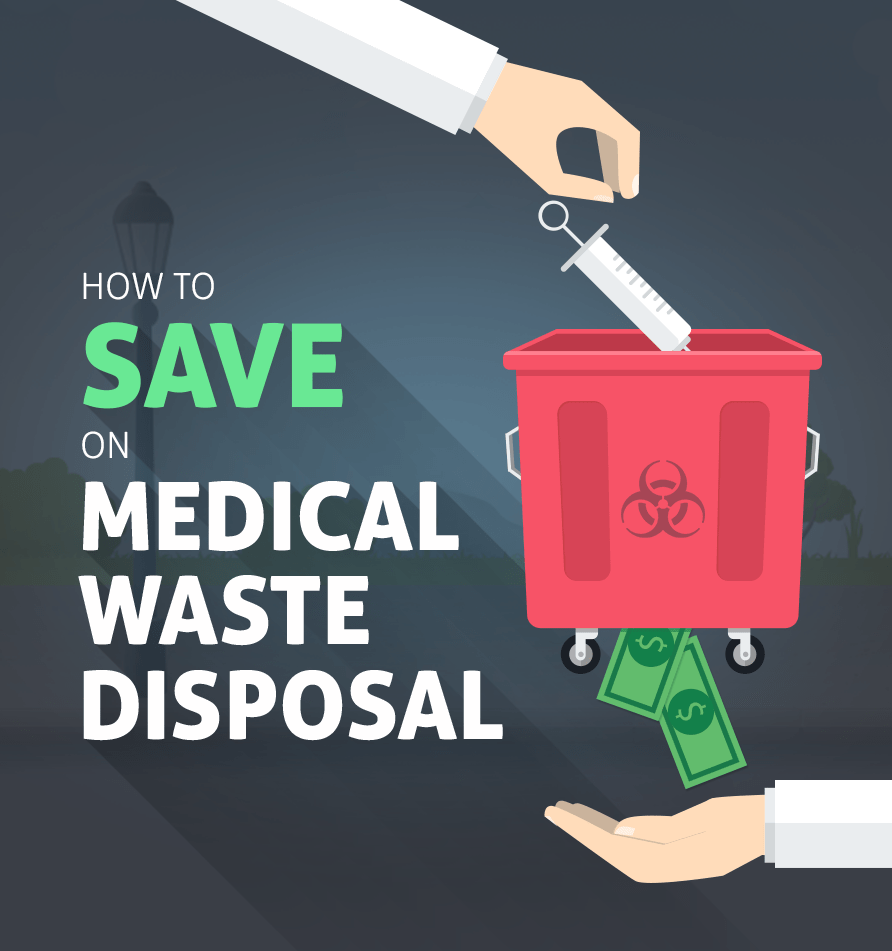Lasting Solutions for Medical Garbage Disposal
The appropriate management and disposal of medical waste is crucial in keeping a lasting and safe medical care system. This introduction will certainly explore numerous lasting solutions for medical waste disposal, consisting of waste segregation and sorting, on-site waste treatment systems, reusing and reuse programs, waste-to-energy conversion technologies, as well as cooperation and education efforts.
Waste Partition and Sorting
The process of waste partition and sorting is vital in making sure proper management and disposal of medical waste. Medical waste is identified into different classifications based upon its potential danger to human wellness and the environment. Proper segregation and sorting of waste assistance to decrease the risk of contamination and make sure that each kind of waste is handled and taken care of appropriately.
The initial step in waste partition and sorting is to identify and separate different kinds of medical waste at the factor of generation. This involves acknowledging the numerous categories of waste, such as infectious waste, sharps waste, pharmaceutical waste, and chemical waste. medical waste disposal. Each classification requires particular taking care of and disposal methods to stop damage to health care employees, individuals, and the atmosphere

On-site Waste Treatment Solutions
Continuing from the previous subtopic on waste partition and sorting, an efficient option for sustainable clinical garbage disposal is the execution of on-site waste therapy systems - medical waste disposal. These systems enable medical care centers to treat their medical waste on-site, decreasing the need for transport and disposal at off-site centers. On-site waste therapy systems commonly include technologies such as autoclaves, microwave systems, or chemical sanitation units
Autoclaves, commonly made use of in health care setups, utilize high-pressure steam to decontaminate and treat clinical waste. This procedure effectively eliminates bacteria, infections, and other possibly damaging bacteria, rendering the waste risk-free for more handling and disposal. Microwave systems, on the other hand, usage microwave radiation to heat and deal with the waste, attaining comparable results to autoclaves.
Chemical sanitation systems entail using chemicals to disinfect and deal with clinical waste. These systems can make use of various anti-bacterials, such as chlorine-based remedies, to reduce the effects of virus and decrease the threat of contamination. The treated waste can then be securely gotten rid of in routine waste streams or undertake further treatment, such as shredding or incineration.
Applying on-site waste treatment systems provides a number of advantages. It reduces the environmental effect connected with carrying clinical waste to off-site centers, minimizing carbon emissions and the threat of accidents during transportation. Furthermore, it gives medical care centers with more control over the treatment process, making sure conformity with laws and reducing the possibility for unapproved accessibility to sensitive medical waste.
Recycling and Reuse Programs
To additionally improve lasting clinical waste disposal methods, health care centers can carry out recycling and reuse programs, constructing upon the structure of on-site waste therapy systems. Recycling and reuse programs use an extra layer of ecological obligation by diverting medical waste from landfill and finding alternate usages for particular products.
One trick facet of recycling and reuse programs is the partition of waste at the resource. medical waste disposal service. By executing correct waste partition protocols, healthcare centers can separate recyclable products, such as plastics, steels, and glass, from non-recyclable waste. This allows for the efficient recycling of these materials, decreasing the need for virgin resources and reducing the environmental influence of medical waste disposal
In enhancement to recycling, health care centers can check out opportunities for reusing certain medical products. As an example, single-use things like medical drapes and dress can be disinfected and recycled, minimizing the requirement for new materials and reducing waste generation. Recyclable sharps containers can also be employed, lowering the quantity of plastic waste produced from disposable containers.
Carrying out recycling and reuse programs requires correct framework and training - WasteX Medical Waste Disposal. Healthcare centers should buy proper recycling containers, segregation systems, and sanitation equipment, in addition to make sure staff are enlightened on proper waste monitoring methods
Waste-to-Energy Conversion Technologies
One possible strategy to address clinical waste disposal sustainably is with the utilization of waste-to-energy conversion modern technologies. These technologies supply a promising remedy to the growing trouble of medical waste, which postures significant ecological and public health threats. Waste-to-energy conversion involves transforming the organic components of clinical waste into energy, such as warmth or electrical energy, through different procedures like pyrolysis, incineration, and gasification.
Incineration is one of the most commonly utilized waste-to-energy modern technology for medical waste disposal - WasteX Medical Waste Disposal. It involves the controlled combustion of waste at heats, converting it into ash, gases, and warmth. This warmth can be made use of to generate steam, which can then be converted into electrical energy
Pyrolysis and gasification are more recent technologies that provide more environmentally friendly alternatives to incineration. Pyrolysis involves heating the waste in the lack of oxygen, resulting in the production of gases and char. Gasification, on the other hand, transforms waste right into an artificial gas or "syngas" that can be utilized as a fuel for electricity generation or other commercial procedures.
These waste-to-energy conversion modern technologies not just minimize the volume of medical waste but likewise offer a source of renewable resource. In addition, they can help in reducing greenhouse gas exhausts and reliance on fossil gas (WasteX Medical Waste Disposal). Nevertheless, it is very important to guarantee that these technologies are carried out with proper emissions regulate procedures to reduce any possible negative effect on air high quality and public health.
Partnership and Education And Learning Initiatives
Partnership among stakeholders in the health care industry is vital for executing lasting solutions for medical garbage disposal. In order to properly attend to the obstacles connected with clinical waste monitoring, it is vital for medical care facilities, waste administration business, regulators, and other pertinent celebrations to function together.

In addition, education campaigns play an essential duty in advertising lasting methods. Health care experts require to be familiar with the environmental effect of incorrect waste administration and the significance of executing sustainable services. Training programs and educational products can aid them comprehend the appropriate segregation of waste, making use of eco-friendly choices, and the benefits of waste-to-energy conversion technologies.
Collaboration and education and learning can likewise facilitate the growth of guidelines and guidelines for clinical garbage disposal. By collaborating, stakeholders can add to the development of comprehensive plans that guarantee safe handling, transport, and treatment of clinical waste.
Conclusion
In final thought, embracing sustainable options for medical garbage disposal is vital in order to reduce the adverse effect on the atmosphere and public health. Waste segregation and sorting, on-site waste therapy systems, recycling and reuse programs, waste-to-energy conversion modern technologies, and cooperation and education initiatives are very important techniques to achieve this objective. Implementing these options requires partnership in between healthcare centers, waste monitoring business, and federal government agencies, in addition to continual education and recognition campaigns.
The procedure of waste partition and sorting is important in making certain proper administration and disposal of clinical waste.The first step in waste partition and sorting is to identify and divide various types of medical waste at the factor of generation. This entails recognizing the various classifications of waste, such as infectious waste, sharps waste, pharmaceutical waste, and chemical waste.Proceeding from the previous subtopic on waste segregation and sorting, an effective option for lasting clinical waste disposal is the implementation of on-site waste treatment systems. The treated waste can after that be safely disposed of in regular waste streams or undergo additional therapy, such as shredding or incineration.